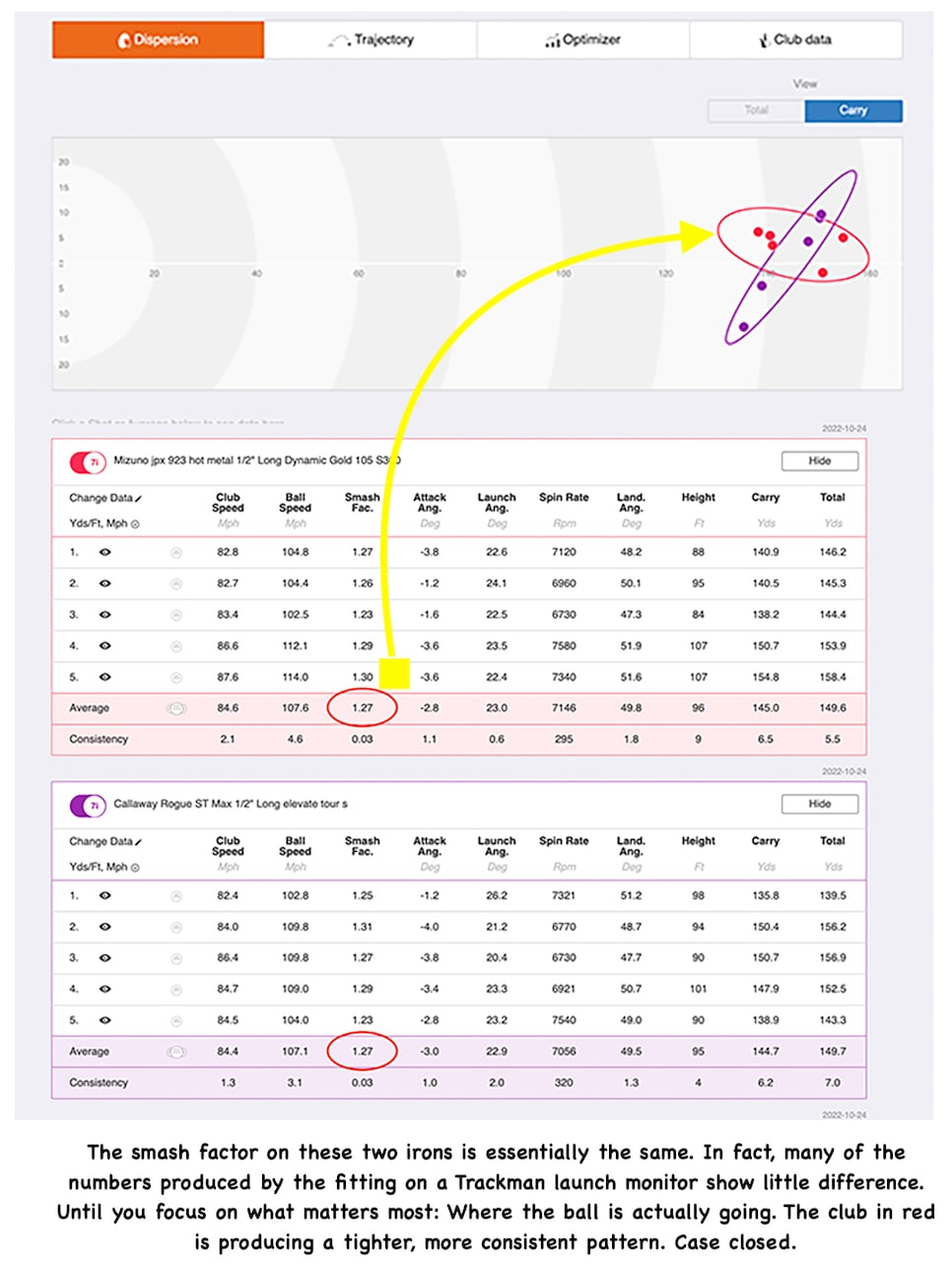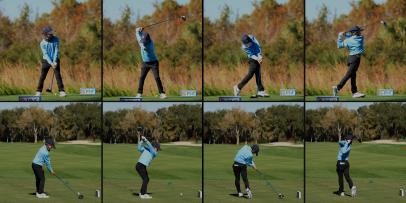equipment
Smash factor sounds cool for your next driver fitting, but may not be so cool for your irons

spxChrome
Smash factor is one of those terms like all-you-can-eat buffet. It sounds like it means something, but maybe not as much as its ostentatious name might lead you to believe.
This is particularly true when it comes to understanding which irons are the best for your game.
First, a brief tutorial. In the simplest terms, smash factor is the ratio of ball speed (the speed of the ball immediately after impact) to swing speed. You will notice on a launch monitor that it is recorded as a number like 1.48 or 1.32 or 1.27. Specifically, smash factor is a way of understanding how efficiently you’re transferring the energy of your swing into the ball, how solidly you’re making contact.
Smash factor gets a lot of consideration in drivers. First, in a driver fitting the variables of loft and shaft weight and shaft length aren’t always so different. Generally, with the right driver, you’re trying to produce a smash factor in the high 1.4s. Theoretically, the best number you can produce is 1.5. Fitters often look at smash factor as confirmation that a player is making consistent contact, that the shaft and head combination is ideal.
With irons, it can get messy. First, the smash factor is lower because the loft of a 7-iron is a lot higher, and impact is more oblique. You can’t generate as much ball speed so the smash factor might be in the high 1.2s or low 1.3s. Of course, because 7-irons often have different lofts from brand to brand and because a lower loft almost always produces a higher smash factor, the number you see in an iron fitting is rarely an apples-to-apples comparison. Some 7-irons have 27.5 degrees of loft and some have 32. If a player isn’t able to launch shots properly off the lower-lofted club, it will produce a lower flight that won’t hold the green.

Photo by Dom Furore
To put it bluntly, a great smash factor might make for a lousy iron. Here’s an explanation from John Hutzler from SwingFit in Bunker Hill, W.Va., a Golf Digest 100 Best Clubfitter.
“I don’t put a lot of stock in smash factor with irons,” he said. “The true goal, and I can’t stress this enough, is to tighten up dispersion, then chase distance. I’m a firm believer if we can help the customer find the center of the face consistently and compliment their swing with the correct center of gravity and loft in a particular iron, distance and smash factor happen simply as a by-product.”
Now, one way that smash factor may be helpful is as a measure of how consistent your impact is with a particular iron-and-shaft combination. If the smash factors for 8 or 10 shots with a particular 7-iron are in the 1.35 zone and aren’t varying by more .02, that’s a sign you are delivering the club consistently.

“For an iron fitting, I will almost always at least glance at the smash factor because it can be an indicator of ‘performance,’” said Craig Allan, director of the Golf Performance Center at Sea Island, a 100 Best Clubfitter. “By that I mean it is a fairly good indicator on how well a head/shaft combination may be working for someone based on their specific club delivery tendencies. This is especially true when you have narrowed it down to one head. It can help separate a couple of shafts performing similarly. But with irons, since we are focusing on a high level of control, there are definitely more important factors like launch angle, spin rate, total height, landing angle, dispersion in all directions, consistency, to name a few.”
Bottom line: Smash factor sounds a lot more powerful than it is when it comes to your irons. Instead, make sure the iron you’re most excited by isn’t the one that has a high smash factor, but one that’s producing the most meaningful distance and the most consistent direction, with a landing angle that’s going to keep your approach shots close to the target. That, in a word, would be smashing.




